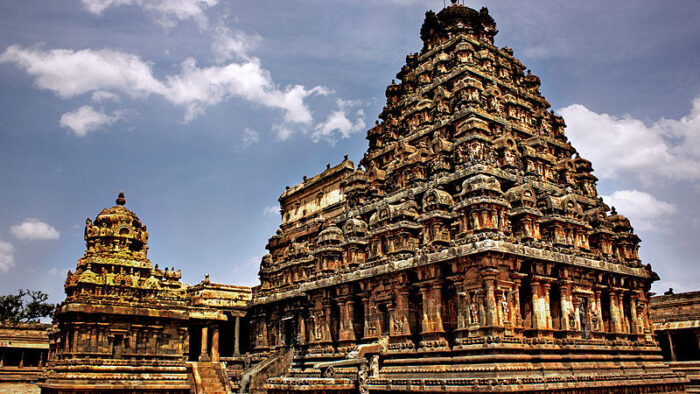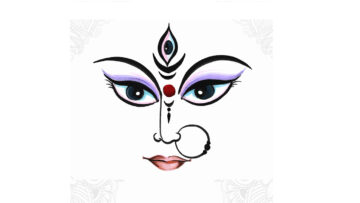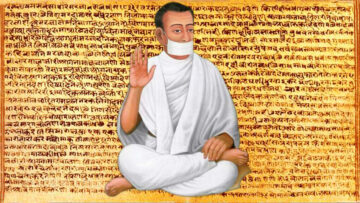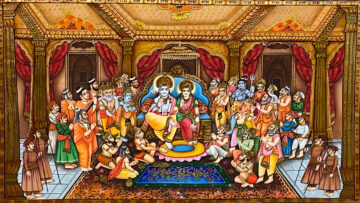The imperial Cholas were avid patrons of temple building activities. Three major temples built under their rule have caught the eye of international art connoisseurs and heritage community, which are Tanjore, Gangaikondacholapuram and Darasuram temples, thus granting them the status of UNESCO world heritage sites. Darasuram is chronologically the latest among the three temples and hence displays a higher level of detail in workmanship. The evolution of religion also contributed to the elaborate planning and execution of the temple. This article aims at providing an introduction to some important aspects of the temple of Rajarajeshvara at Darasuram.
Kulottunga’s reign (12th Century):
The construction of this temple was patronized by Rajaraja Chola – Ii. It is imperative to understand the reign, beliefs and the court literature of Rajaraja’s predecessor, Kulottunga-Ii to comprehend the temple’s panels in their entirety.
Kulottunga’s reign was marked by religious fervor and a display of favoritism towards the Shaiva sect. Though Gangaikondacholapuram was the capital of Kulottunga-II, Chidambaram, the seat of Shaiva worship was developed and beautified. It was during this period that the 7-tier towers and the shrine for the goddess were constructed at the Chidambaram temple. Various Vimanas of Shiva shrines were covered in gold and other donations made. Court literature of this period by Poet Ottakuthar also informs us that the shrine of Govindaraja (Vishnu) was desecrated by Kulottunga-II and the deity thrown into the sea. Thus, the period was not only characterised by a display of a liking towards the Shaiva cult, but also in nurturing an atmosphere of hatred towards Vishnu. This is evident by the words of the poet, wherein a deity like Vishnu is being referred to as small, insignificant and trouble causing. Ottakkuthar also writes that Vishnu was sent to his original abode of sea, from inside the temple by Kulottunga-Ii.
The literature produced in the court of Kulottunga has influenced many panels in the temple of Darasuram. The famed Shaiva poet ‘Sekkizhar’ was a minister of Kulottunga’s court and produced his magnum opus called “Periya Puranam” that details the lives of 63 Shaiva saints, also called as the Nayanmars.
Patron of the temple:
Rajaraja and Tamil literature:
Rajaraja-II’s reign was marked by continuous patronage to poets, which gave the monarch the title of ‘Muthamizhkkuthalaivan’, which translates to ‘leader of the three Tamils’ (Iyal-Prose, Isai-Poetry, Nataka-Drama). The poet of his predecessor’s court, Ottakkuthar was the poet of Rajaraja’s court also. He produced many works such as MuvarUla, Kulottungan Pillai Thamizh, Thakkayagapparani etc.
Rajaraja’s Reign:
From the third reigning year of Rajaraja, two major Prashastis of his are obtained. These give details of his achievements, birudas and the names of his queens (Avanimuzhuthudaiyal, buvanimuzhuthidaiyal, ulagudaimukkokilanadigal). Some of his titles were Cholendrasimhan – The lion among Chola Kings, Virodayan – From where valour originates, Rajagambhiran – Valorous king, Ethirilisozhan – The Chola with no equal enemy etc. Epigraphs and literatures help reconstruct the reign on this king. The religious fanaticism of his predecessor is not seen in his rule, which is evident from his grants available at Vishnu temples. Literatures such as Rajaraja Sozhanula give information relating to an action of his to redirect the flow of Cauvery for irrigation. His major temple building activity was that of Darasuram, undertaken during the later periods of his 28 year reign.
The Location:
Currently, the temple of Darasuram is located in a village bearing the same name. During the Chola era, this area was part of the administrative zone of Pazhaiyarai city. Pazhaiyarai has been an important city in the history of Chola Empire. Up to the rule of Rajaraja-I, the town was called Pazhaiyarai, which was renamed as Mudikondasozhapuram by Rajendra-I. Today, the village is known by its older name only.
Apart from being an important town in the history of the Chola clan, it was also a town of religious activity. Nandivarma had constructed a Vishnu temple, which was also sung by Thirumangai Azhwar, one of the 12 Vaishnava saints of the Tamil tradition. The Shaiva Nayanmar saints have sung the temples of the town.
A part of this town was selected as the site for the temple of Darasuram.
Etymology of the name:
The epigraphs that are contemporary to the building of the temple refer to the temple as Rajarajeshvaramudaiya Nayanar temple and the area as Rajarajapuram. However, in the later Pandyan epigraphs of the temple, the name is colloquially transformed as Rarasuram, which today is known as Darasuram.
Layout of the temple:
Darasuram is a twin temple complex inside a Rajagopuram, dedicted to Shiva and Devi respectively. Encroachments in the past years have made the temple appear like two separate shrines for the two deities. The Rajagopuram lies in ruins, with the prasatara-varga (Upper portion) absent. There are 46 sub-shrine deities (Koshta Murthies) in the tower.

As one enters the Rajagopuram, the ornate Balipeetam and Rishabhakoshtam are found, before which is the second Gopuram. This Gopuram is complete in structure and is very intricate in details. Inside the Gopuram is a huge Prakara – circumambulation path around the temple. The temple has been constructed with a pillared hall running along the parapet wall. The main shrine has a vestibule called the antarala, an Ardhamantapa and a huge hall before it called as the Rajagambhiran Thirumantapam, which also houses a shrine for Devi. A small Chandikeshvara shrine exists at the North-west side of the temple.
Gopuram and Balipeetam:

The Second Gopuram faces east and has tree-Talas or floors. It has a big upa-peeta and a Jagati which is followed by a Bhitti, which is decorated with kudya-sthambhas and a portico. The Gopuram is of 5 Kalashas and carries many stucco figures of deities.
The Bali peeta is ornate in its decorations.

There are Saalas decorating the center portion of the Balipeeta. This saala has a Kritimukha and a kudu in the middle, inside which a lady is shown dancing with a Dola hasta and a katakamukha in either hands. Around the lady’s figure beautiful symmetric designs (karukku) are depicted. The saala has 8 lions beneath it divided into two sets of 4 each, facing each other symmetrically. Warriors and fighting ganas are shown around the Saala, under Kritimukhas or independently.
Koshta Images:
There are many Koshta images in the walls of sanctum and the Rajagambhiran Mantapam. These are of interest as many of them have unique iconographies. Some of them can be directly traced from the Agama texts, while some require a further deeper study regarding their positioning in the said direction, their canonical sanctions in the agamas or other such texts, which would have formed the basis for such depictions.
As in the case of the Tanjore Big temple, we do not, unfortunately have any sources that inform us of the agama that was followed to built this temple and conduct its worship. Some Koshtamoorthies are analysed here with respect to their dhyanas from various sources.
Shankhanidhi and Padmanidhi:
The two nidhis namely Shankha and Padma greet a visitor entering the second Gopuram on either sides of the Rajagambhiran Thirumantapam. These are short-dwarfish figures and hold lotuses in their hands. Their dhyana can be found in the ‘Amshumadbhedagama’ as follows:
शंखपद्मनिधीद्वौचभूताकारौमहाबलौ
आसीनौपद्मपीठेतुपद्महस्तौद्विजोत्तम
“The two nidhis of Shankha and Padma must be made with a form of Bhuta (short figures) and must be very valorous. They must be seated on a lotus pedestal, carrying two lotusses in their hands.”

MartandaBhairava:
A synchronous form of Sun god and Shiva is known a MartandaBhairava. The Martandabhairava form at Darasuram is unique as Shiva is depicted in his Ardhanari – Half man half woman form. Such worship of Surya as Shiva has mentions in the Devaram also.

Nagaraja:
Nagaraja is seen with folded hands in Anjali mudra. He is seen wearing a Karanda makuta and 5 hoods on top of his head. He is decked with many ornaments and is seen over a lotus pedestal. This concurs with the dhyana found for Nagaraja in ‘Amshumadbhedagama’.
“करंडमकुटोपेतंनागंपंचफणान्वितं|
सर्वाभरणसंयुक्तंपद्मपीठोपरीस्थितं ||”
“Wearing a Karandamakuta and having five hoods on top, he shall wear all ornaments and be fixed on a lotus pedestal”.
Aghora Murti:
Aghora Murti is seen seated in sukhasana with four hands. He holds bow and arrow in the rear hands and a sword and a shield in the front hands respectively. He has a Jwala makuta and is seen with an angry looking face.
Linga purana details the procedure for establishment and worship of the Aghora form of Shiva. In agamas, like Karanagama and other texts like Sivatatvaratnakara, we obtain dhyanas for 8 and 32 handed Aghora forms respectively.

AghoraBhairava:
The dancing form of Bhairava is seen with a fierce looking face and a Jwala Makuta. He holds a Trident, sword, Khatvanga and a Log of wood; 14 Snakes decorate his body as ornaments. 2 on either foot, 2 on Vastra, 1 as Udara Banda, 1 as upavita, 4 on hands and 4 inside his earrings respectively.

Sarabheshwara:

Sarabheshwara is the fierce form of Shiva subduing Narasimhavatara of Vishnu. Karanagama prescribes the worship of the deity by kings to win over enemies. .A detailed dhyana for the icon is available in Uttara Kamikagama.
Sarabha is a mythical bird, whose form Shiva assumes to subdue Narasimha. Here, below the hands of Narasimha, we find the weapons of Vishnu, being Shankha and Chakra inverted. They are falling down, having slipped from the hands of Narasimha. Narasimha is shown with multiple hands, inverted having no power to do any activity. Two hands are in anjali mudra, saluting the Sarabha bird. Holding the stomach of Narasimha is Sarabheshvara, who is depicted as if moving upwards into the skies. He is surmounted by a small umbrella signifying supremacy. He sports a Jatabhara. Behind him, in the skies are many Devas who are praising the valour of Shiva and are in prayer.
Miniature Nayanmar Life panels –
Origin of Nayanmar worship:
It is said that One day, SundaramoorthiNayanar went into the temple at Thiruvaroor and found a number of devotees of Shiva there. He wanted to sing their glories. The Lord Himself sang the first line of the famous poem Thiru-Thondar-Thogai and that Sundarar completed it.
This is believed to be the origin of an organized worship of the Shaiva saints called the Nayanmars. The ten song compilation of Sundarar mentions many devotees by name.
The stories of the devotees is expanded and narrated by NambiyandarNambi in his work called ThiruthondarThiruvandadi. Later, in the court of Kulottunga-II, Sekkizhar composed his magnum opus called the Thiruthondar Puranam or Periya Puranam that details the life of the Nayanmars.
The temple of Darasuram was built post the composition of this puranam and hence, the miniature panels reflect many incidents vividly as described in the work of Sekkizhar. Some Incidents of the saints are depicted with so much detail, that every song of the sacred Devaram is made into a sculpture.
Appar’s journey to Kailasa:
Appar, in his ripe old age takes the ordeal to walk to Kailasa to have darshan of Shiva. His feet were sore. Therefore, he crawled with his hands, upon which his elbows began to bleed. Then he used his chest and crawled. His chest began to bleed and his ribs broke. Appar, undaunted, continued his journey to Kailasa, rolling on the ground. Shiva created a tank nearby and appeared before Appar in the form of a saint, with matted locks, rudraksham and holy ash. The saint found out from Appar that he was proceeding to Kailasa and said, “Oh friend, the Lord of Kailasa cannot be seen by human beings. So, turn back.”
Appar said, “So long as I have this body, I will not turn back without going to Kailasa.” He turned towards the saint again, bowed to him, and began to part for Kailasa.
Appar understood it was the Lord Himself. The Lord afterwards kept Appar invisible company, giving him encouraging words now and then. Appar mentally prayed to Lord Shiva to grant him a fresh body, so that he may continue the journey.
The Saint directed Thiru-navuk-arasar (Appar) to take bath in a near-by tank and said, “You will see me and my abode (Kailasa) in Thiruvaiyar.” After the dip in the tank, Appar found himself in Thiruvaiyaru and having Kailasa Darshana. Every object of his vision, be it elephants, deers or swans, appear as Shiva and Parvati. He sings this feat in ten beautiful songs, each of which is carved as a miniature sculpture at Darasuram.


The Story of MeipporulNayanar:
MeipporulNayanar was a devout Shiva bhakta and a King. His enemy King’s name was Muththanathan. Muththanathan was the king who made all futile efforts to win meypporuLAr in the battlefield. He knew that the meypporuLAr salutes and serves the devotees smeared with holy ash and other great symbols of Lord Shankara. Muththanathan wanted to exploit this quality of that devotee.
Muththanathan came in disguise as a Shaiva ascetic and asked Meipporul if he can teach some divine concepts to him. Meipporul instantly agreed and sat down to listen to him. From the book he held in his hand, Muththanathan took a sword and pierced Meipporul.
When the bodyguard of Meipporul, whose name was Datta tried to attack the disguised Muththanathan, MeipporulNayanar confronts him and says that a person in Shaiva ascetic form even has the right to kill him and that nothing should be done to him.

The miniature panel of Darasuram does full justice to the emotion of the episode narrated in Periya Puranam.
Paintings of the Temple:
The walls of the temple and some of the Koshta Murtis are painted. Though there is much wear and tear, colours are still visible on them. These paints are from the Nayaka period and reflect the society of the Vijayanagara-Nayaka times. The dressing style, dances etc. can be traced from the paintings.
Divinities such as Devi, Rishis can be found as paintings in some mantapas of the temple.

The Odhuvars of the temple:
There are 108 sculptures of Shaivite devotees standing in a row in a mantapam. It is speculated that these people were the Othuvars or those who sang the Devaram during the times of Rajaraja-II. It is also possible that these were Shiva Dikshithas who were trained in the Agama. Their names are also inscribed near them. For example, nAngurudaiyArmadhEshvaranAnatatpurushashivar, maNalUrkizhavarOlaivenrArAnaagOrashivar – Etc.

Rajagambhiran Thirumantapam:
The Rajagambhiran Thirumantapam’s name is known as there is an inscription to that effect in the same place. This mantapa’s pillars showcase the finesse of the Chola sculptor in sculpting fine miniature sculptures in granite. Those of tripurantaka, Gajantaka, Ganesha etc. showcase fine details in very small sizes. Further, we find unusual poses of Shiva, like playing the flute etc.
The mantapa also houses a shrine for devi and other sculptures of KannappaNayanar, Annapurani, Adhikara Nandi etc.
In 48 panels, some major episodes of Skanda Purana are depicted. These are sculpted in 4 Pillars with 12 panels each. The attention to detail is striking, given the material the sculptors are working on is hard granite and that the availability of space is scarce.
Secular Panels in the temple:
Many panels depicting various forms of dances, motifs of entertainment value such as the Rishabha-Kunjaram, where, when the elephants body is hidden, a bull is seen and vice versa.
There are also panels that depict scenes of daily life like circuses being performed, a lady looking into the mirror, a lady delivering a baby etc.
Inscriptions of the temple:
A number of labeling inscriptions are found in the temple. For example, the 108 Shiva Dikshitas are named near their respective figures; the miniature nayanmar panels have their labels etc. Apart from this, there are votive and other inscriptions also that are found in the temple, a sample of which is discussed below.
A dvarapalaka brought as a war trophy after the destruction of Kalyanapuram of the Chalukyas was present at the temple earlier and has been moved to the Tanjore art gallery today. An inscription to the effect that this Dvarapalaka was brought after burning Kalyanapuram by Vijayarajendra Devar finds mention in the temple.
An epigraph from Rajaraja-II’s time reveals that many trees in the surrounding area were uprooted by a storm and that the government helped replant the trees to the farmers. When the trees bore fruits, the farmers were liable to repay in kind to the temple specified number of the fruits/vegetables of that particular tree that was re-planted by the government.
Kulottunga-III’s epigraphs give the details of appointment of goldsmiths in the temple and the details of salary, quarters and other emoluments that were given to them. Another inscription from the same period gives us information about the misappropriation of temple land and how the people were warned to return such lands to the temple.
Pandya inscriptions are also found from the 14th century. One such inscription talks about the decisions to levy tax on various items. The rates are also mentioned in detail, for example, weights and measures attracted a tax of 5 %. Penalty clauses are mentioned as to collect the taxes evaded from such defaulters.
Darasuram in Literature:
The Barani Literature called ThakkaYaga Barani was composed at Rajarajeshvaram temple and has many mentions about the Shiva of the temple, about the streets and people of Darasuram. The composer Ottakuthar’s final resting place is not far from the temple as well.
Darasuram as a weaving cluster:
Apart from the temple, the town of Darasuram is also famous for its handloom weaves. The members of the weaving community are descendants of people who migrated to Tamil Nadu from Gujarat’s Sourashtra region centuries ago. They speak a unique language called Saurashtra, which has loan words from various languages such Sanskrit, Gujarati, Telugu, Tamil and Kannada.
Thus, Darasuram entails elements of refined art and architecture while narrating the tales of the greatest souls of the Shaiva pantheon. Much of its iconographical conceptions remain an enigma. Though much academic and public attention falls on the other two heritage sites being Tanjore and Gangaikondacholapuram, Darasuram remains aloof in argumentative academic work. More light into the religious aspects of Darasuram would shed light on our understanding of the Shaivite faith of the Cholas.
Featured Image Credits: tamilnadu-favtourism.blogspot.com
Disclaimer: The opinions expressed in this article belong to the author. Indic Today is neither responsible nor liable for the accuracy, completeness, suitability, or validity of any information in the article.







